Table of Contents
- 1 Where is the Upper Noosa River?
- 2 How to be a Responsible Camper while Kayak Camping in the Upper Noosa River
- 3 Aboriginal Culture of the Noosa Area
- 4 When to Go Kayak Camping in the Upper Noosa River
- 5 Camping Sites in the Upper Noosa River
- 6 How to Book Your Camp Site
- 7 The Upper Noosa River Paddle
- 8 Things to Do While Kayak Camping in the Upper Noosa River
- 9 The Return Home
Introduction
Kayak camping in the Upper Noosa River has been one of my favourite trips so far. If you’re in Australia and jumping on board the #HolidayHereThisYear campaign, this trip should definitely be on your list.
The trip has the perfect combination of adventure and relaxation while also helping you connect with nature. At Intego Travel, we believe a meaningful connection with nature is the first step to protecting it, so we highlight nature-based travel experiences.
Plus, kayak camping in the Upper Noosa River has the added bonus of being a bit of a less-known ‘thing-to-do-in-Queensland’, which means you get to enjoy the Australian bush minus the big crowds of other natural attractions.
The trip is also relatively easy to organise if you have the right resources.
We planned it on a whim and in less than a week, we found ourselves on our kayaks, taking in the scenery and kayak camping in the Upper Noosa River, unplugged from civilisation. It was the perfect way to enjoy the weekend!
Let’s dive in!
Where is the Upper Noosa River?
The Upper Noosa River waterway is part of the Cooloola Recreation Area, Great Sandy National Park, on the Sunshine Coast, Queensland.
Access to the Upper Noosa River can only be done with a canoe, kayak or a boat.
The distance of the waterway is 27.7km one way, however, the exact distance for you will vary depending on where you choose to launch and the campsite you stay in. Don’t worry, I’ll give you all the information you need further down the post.
For now, just check out the map below to give you an idea of where the Upper Noosa River is located within the Cooloola Recreation Area. I’ve highlighted it in the red rectangle.
How to be a Responsible Camper while Kayak Camping in the Upper Noosa River
First things first!
Kayak camping in the Upper Noosa River truly is a privilege.
You get to immerse yourself in nature while taking advantage of the wonderful amenities that Queensland Parks & Wildlife provides. So, it’s important that you familiarise yourself with some easy steps you can take to help look after the natural environment and the facilities found here.
• Take your rubbish with you. There are no rubbish bins at any of the campsites, so whatever you bring in must go out with you. Bring a few rubbish bags or sealed containers where you can store your rubbish while camping. Want to be even more of a responsible camping champion? Segregate your rubbish! Make sure you put recyclables in a recycling bin once you get back home.
• Do not feed the wildlife. Feeding human food to wildlife is harmful to animals. It can make them sick, lose their wild instinct, and be aggressive towards people. It might be tempting to do so, but you will be doing them more harm than good. Avoid the temptation and keep our wildlife safe, which brings me to my next point.
• Keep your food and rubbish in closed containers at night. You’d be surprised how quickly animals learn where humans store their food and rubbish. Despite how ‘non-edible’ you might think something is, trust me when I say they will do anything to get into it. I once had a possum eat a bar of soap left outside overnight while rock climbing in Brooyar. Also, do not leave plastic bags hanging from trees overnight. Put your food and rubbish in closed containers where animals can’t access them. Queensland National Parks has put together the below video to help you keep wildlife wild.
• Be careful if swimming. Bull sharks have been sighted throughout the river system. There are also submerged logs that may not be visible to you. Queensland Parks advises not to dive or jump into the river to prevent injury. Personally, we did take a quick dip once we got to our campsite to refresh ourselves from the long paddle but the dark water and the bull shark warnings freaked me out. I was back on land in no time!
• Be mindful of other people. You might come across other people who are also kayak camping in the Upper Noosa River. Be mindful of their space and their right to enjoy the wilderness. Just because you like playing loud music while camping doesn’t mean someone else will enjoy listening to it. Try and keep the volume to a decent level or choose to forego the music altogether. In fact, one of my favourite things we did while kayak camping in the Upper Noosa River was to sit quietly on the campsite jetty during sunset listening to the sounds of the forest. It sounded like one of those ambient nature sounds CDs I used to buy as a kid, except it was real, which made it that much more special.
• Make proper use of toilets. Not all the campsites in the Upper Noosa River have toilets. Those that do, though, are non-flush/drop toilets. Please don’t throw nappies, sanitary products or cigarette butts down the toilet. In fact, if you haven’t eaten it, it doesn’t belong in the toilet (except for toilet paper, of course). If you stay at one of the campsites that do not have toilet facilities, it’s best to bring a portable toilet. If bush toileting is necessary, though, follow the recommended practices featured in the video below.
• Follow all park rules. Queensland Parks and Wildlife Service has a comprehensive list with everything you can do to look after the park while visiting. I highly recommend you read through it.
• Learn about the park’s cultural history. Every part of Australia is Aboriginal country. Learning about this rich cultural history is important, as it allows us to understand our shared past and acknowledges the traditional custodians of the land we live, work and play in.
Aboriginal Culture of the Noosa Area
The traditional custodians of the Noosa area are the Kabi Kabbi or Gubbi Gubbi people. Their land stretches roughly 100 kilometres to the south and 150 kilometres to the north of the local Noosa council.
The Kabbi Kabbi people were one of two tribes that hosted the great Bunya Nut Festival, which represented an important social gathering for indigenous groups from distant areas.
For roughly 20,000 years, the Kabbi Kabbi people inhabited the present-day Noosa region. They hunted the ranges, fished from the rivers and gathered seafood from the ocean.
Large numbers of Aboriginal people lived in the Sunshine Coast area until the late 1800s, when they were either killed or forced from their traditional lands by white settlers who were exploring the area’s potential for timber exploitation.
Unfortunately, there are few records of the culture and history of the Kabbi Kabbi people. However, the local Booin Gari festival held on the banks of the Noosa River celebrates Aboriginal and Torres Strait Islander culture every year.
When to Go Kayak Camping in the Upper Noosa River
We went kayak camping in the Upper Noosa River in early November. The weather was perfect!
I would recommend going in spring or autumn. During spring, the chance of rain is small but there’s plenty of sunshine. The temperatures also cool down at night.
If you’re like me, winters might be too cold and summers might be way too hot to enjoy the outdoors. Summers also bring the highest chances of rain.
How to Get There
The Upper Noosa River is located within the Cooloola Recreation Area in the Sunshine Coast. Although you need a vehicle permit to access some parts of the Cooloola Recreation Area, you do not need a vehicle permit to access the Upper Noosa River waterway.
There are several access points to the Upper Noosa River: Elanda Point, Boreen Point and Harry’s Hut.
Let’s have a look at how to get to them.
Elanda Point and Boreen Point
Drive north on the Bruce Highway towards Pomona. Take exit 237, then take the 2nd exits on the two roundabouts you’ll come into after exiting the motorway.
Continue onto Elm St until you come into Yurol Forest Dr and take a left there.
Then turn right onto Summit Rd and then another right at Louis Bazzol Dr. You’ll be on this road for approximately 16kms until it diverts into Laguna St and Lake Flat Rd. Take a left at Lake Flat Rd.
If you’re launching by boat from Boreen Point, turn right at Woongar St towards the boat ramp at Boreen Point.
If you’re launching by canoe or kayak from Elanda Point, continue onto Lake Flat Rd for approximately 2km.
On a left-hand bend, you will see the gravel road into Habitat Noosa on your right, which will take you to the Elanda Point launch site.
Harry’s Hut
In the interest of efficiency (read: laziness), we ended up launching from Harry’s Hut, as it is closest to the campsites. Getting to Harry’s Hut is an adventure in itself, as you have to wade through wild Aussie bush and dirt roads.
To get there, drive north on the Bruce Highway. Get off the motorway on exit 237 and then take the 2nd exit on the 1st roundabout and the 1st exit on the second roundabout onto Old Bruce Highway.
When you come into Pioneer Rd, take a right, and then another right at Reserve St. Continue straight until you come into Factory St, which becomes Pound Rd and then Pomona Kin Kin Rd.
Continue on Pomona Kin Kin Rd for approximately 12km, until it forks into Main St and Gympie Kin Kin Rd. Turn right at Gympie Kin Kin Rd and stay on it for approximately 11km.
Eventually, Gympie Kin Kin Rd becomes a dirt road and takes you out onto Cooloola Way. Take a right at Cooloola Way and then take a slight right onto Harry’s Hut Rd.
Stay on this road until you come out to Harry’s Hut. You can launch your canoe or kayak from here.
What to pack for your kayak camping trip in Noosa
Obviously, the first thing you will need is a kayak (or canoe) and paddles. Without that, there’s no trip!
Luckily, we were able to borrow the kayaks from Johnny’s (my partner) brother in law, which saved us having to hire one.
If you don’t know anyone you can borrow a kayak or canoe from, I recommend checking out the guys at Kanu Kapers.
They organise half-day, one-day and multi-day tours, which can be self-guided or guided. They hold an Advanced Ecotourism Certification from Ecotourism Australia and are passionate about environmental sustainability and ecotourism.
Also, it’s important that your kayak or canoe has enough storage space. I used a fishing kayak with a chill pod at the back (perfect to store our food!) and a centre well (perfect to store our beers 😉 ).
Here is the full list of suggested items to pack.
Kayaking gear
- Kayak
- Paddles
- Kayak seats
- Gloves (you might not need these but I got blisters from paddling)
- Life vests (PFD)
- Bungee cords with hooks (useful to tie down items and/or tie the kayaks to the jetty when you dock)
Camping gear
- Tent
- Headtorch
- Sleeping mat (in the interest of packing light, we brought two inflatable ones)
- Sleeping bag
- Travel pillow
- Printed booking confirmation
- Solar shower (not necessary but the shower after the hike to the Cooloola sandpatch was very invigorating!)
- Dry bags (we brought three in different sizes, with the biggest one storing Johnny’s clothes. The other two we used to store electronics and other valuables)
Kitchen supplies
- Water (we brought two 3-litre CamelBak hydration packs and two 1-litre Nalgene bottles, which was plenty)
- Rubbish bags
- A camping stove (we brought a Jet Boil)
- A set of camping cutlery
- Ice or chill blocks
- A set of crockery (we brought two cups and a bowl, which we didn’t end up using)
- Food (we brought two packs of Freeze Dri meals for dinner and made sandwiches for lunch. For breakfast, we had fruits and granola bars. We also brought tea bags and snacks for morning and afternoon tea).
Personal items
- Clothes
- Wind proof jacket/rain coat
- Hiking shoes
- Shoes that can get wet (thongs are fine)
- Insect repellent
- Sunscreen
- Hat
- Toiletries (toothbrush, toothpaste, body/face wash, etc.)
- Sunglasses
- Towel
- Earplugs (I’m a very light sleeper)
Miscellaneous items
- Mobile phone (there are only pockets of reception but we used our phones to take photos and videos. It’s also good to have in case of emergency)
- Gopro
- Camera
- Tripod
- Books
- Speakers (we listened to some music while packing the following morning)
Camping Sites in the Upper Noosa River
There are a total of 9 campsites on the Upper Noosa River. They are numbered as campsites 1, 2, 3, 4, 5, 8, 9, 13, and 15. I have no idea why there are missing numbers between them.
Campsites 1, 2, and 3 are set among fringes of open forest or woodland bordering heathland plains to the east. They all have toilets (non-flush).
Jetties are located at campsites 1 and 3, and a canoe landing site is available at camp site 2. Campsite 3 also has picnic tables, as well as the closest access point to the Cooloola Sandpatch walk.
The max occupancy for all campsites is 8, except for campsite 3, which has a max occupancy of 13. All campsites provide shade. The camping surface is sand and is suitable for walk-in camping and canoe/kayak/boat access camping.
The campsites are open 24 hours a day. You can check-in to your camp after 2pm and check-out by 11am on the day of departure. Personally, I don’t think these check-in/check-out times are enforced.
Motorised boats are only allowed until campsite 3. Past this point, only non-powered and electric motor boats are allowed.
Campsites 4-15 are remote camping areas. There are no facilities here like toilets or picnic tables. But if you’re looking to spend a quiet weekend, escaping everyday life and immersing yourself in nature, these might be the campsites for you!
For our trip, we stayed at campsite 3.
How to Book Your Camp Site
Booking your camp site is easy, peasy!
- Head to the Queensland National Parks Booking Service website.
2. If you don’t have an account, click on ‘Create Account’ at the top right of the page, input all your details and create your account.
3. Once logged in, click on ‘Camping’ on the top menu, which will take you to the booking page shown in the image below.
- Choose your stay length (night) and the date of travel.
- Click on the drop-down arrow where it says ‘Enter Park Name’ and type ‘Cooloola Recreation Area’. This will show you all the camping sites available in the Cooloola Recreation Area. Scroll down to find your ‘Upper Noosa River Camping’ area number and then click on ‘Reserve’.
- On the following page, confirm your booking dates and choose your classification fees, number of people and complete the ‘extra information’ section.
- Click on ‘Go to Shopping Cart’ at the bottom to checkout your booking.
- Print out the confirmation email that was sent to you with your camping tag. You will need to hang this on your tent while camping.
The Upper Noosa River Paddle
Paddling the Upper Noosa river can be a gruesome 5-hour paddle or a short, leisure 1-hour stroll. It all depends on where you choose to launch your kayak or canoe and which campsite you will be camping at.
Many people choose to depart from Elanda Point.
From here, you can paddle across Lake Cootharaba for 3.5km (approximately 1hr) to the Kinaba Visitor Information Centre and Fig Tree Point.
Plan to cross the lake early in the morning, as conditions will be more favourable for an easy journey. Otherwise, the wind picks up and the paddle will become a bit of a slog.
From the Kinaba Visitor Centre, you paddle a further 1h 20m to Harry’s Hut. It is during this section of the river that you will come across the crown jewel of the Noosa Everglades known as The Narrows. Here, tannin-stained waters reflect forest and sky, living up to its name as the ‘River of Mirrors’.
Many people choose to stop at Harry’s Hut for a light snack. Since we launched our kayaks here, we skipped lunch until after we arrived at our campsite.
From Harry’s Hut, you paddle upriver towards the campsites.
We came across a few people on our way there but for the most part, it was just us and the Australian bush. The only sounds surrounding us was the sing-song of the native birds and the sploosh-splash of our paddles hitting the water.
To help you plan your trip, I’ve put together the below table showing distance and times from each point.
These were taken with a Garmin GPS and are therefore different (read: correct) than the ones shown in the Queensland Parks and Wildlife website.
| From-To | Distance (One Way) | Time (One Way) | Return (Distance/time) |
| Elanda Point to Kinaba Visitor Centre | 3.5km | 1hr | 7km / 2hrs |
| Kinaba Visitor Centre to Fig Tree Point | 1.2km | 25m | 2.4km / 50m |
| Fig Tree Point to Harry’s Hut | 4.7km | 1h | 9.4km / 2hrs |
| Harry’s Hut to Campsite 1 | 2.8km | 45m | 5.6km / 1.5hrs |
| Campsite 1 to Campsite 2 | 1.7km | 25m | 3.4km / 50m |
| Campsite 2 to Campsite 3 | 1.8km | 30m | 3.6km / 60m |
| Campsite 3 to Cooloola Sandpatch | 5.5km | 1h 5m | 10.55km / 2h 13m |
To see the distance to campsites 4 and beyond, please refer to the table in the Queensland Parks and Wildlife website.
Overall, it took us a total of 1.5 hours and 6.28km to get from Harry’s Hut to campsite 3. This is one way.
If you’re travelling from campsite 3 all the way to Elanda Point, the trip is 18.5km and will take roughly 4.5 hours, so plan accordingly.
Things to Do While Kayak Camping in the Upper Noosa River
So, you’ve made it to your campsite, now what?
Well, kayak camping in the Upper Noosa River is the perfect ‘choose-your-own-adventure’ experience. It’s up to you what to do but here are some suggestions:
- Relax! Enjoy the silence out in the Aussie bush. Unplug, read a book, have a few beers or wine (we did!), and enjoy the serenity without the usual dings of your phone’s notifications and the Instagram scrolling anxiety (no? Just me, then?).
Bonus tip: Wake up at sunrise to enjoy perfect mirror reflections on the river.
- Explore the river. Hey, just because you’ve reached your campsite doesn’t mean you can’t set up camp and go paddling again. You will take in more of the beautiful scenery of the Noosa River.
- Go fishing. If you’re up for it, you can bring your fishing gear and try your luck at angling something.
- Do a bushwalk. You’d be surprised how many trails are in the Cooloola Recreation Area. You can do the Fig Tree Point walk or the Cooloola Sandpatch walk, which is also part of the Cooloola Great Walk. The trail meanders through coastal heath along a low sandy ridge, with breathtaking views of the scrub tree forests down below. Luckily for us, we were the only ones at the Sandpatch that day.
With perfect weather and clear, blue skies, we took our time to enjoy this unique landscape. After about an hour, we headed back down to campsite 3, enjoying one of the most beautiful sunsets I have ever laid eyes on.
Make sure to take enough water and to account for sunset times. We left campsite 3 at 3pm and were back by 6pm. If you’re visiting during winter, though, the sun sets rather early, so you should aim to be back to your campsite by 4:30pm.
The Return Home
Congratulations!
You’ve successfully completed your trip kayak camping in the Upper Noosa River.
On the day of your departure, check that you’re leaving the campsite in a better condition than you found it. Watch out for food scraps and rubbish that may be misplaced and take it all with you.
I suggest packing your campsite early, so if other campers have booked it, they can set up as soon as they arrive.
On our last day, we took our time paddling down the river taking photos. We came across a few people making their way upriver, completely engrossed in the experience. We exchanged smiles and g’days, with Johnny silently singing:
“If you come down to the river
Bet you gonna’ find some people who live
You don’t have to worry ’cause you have no money
People on the river are happy to give”
Did you enjoy this post? Share it or leave a comment!
Liked this post? Pin it! Choose your favourite pin below. 🙂

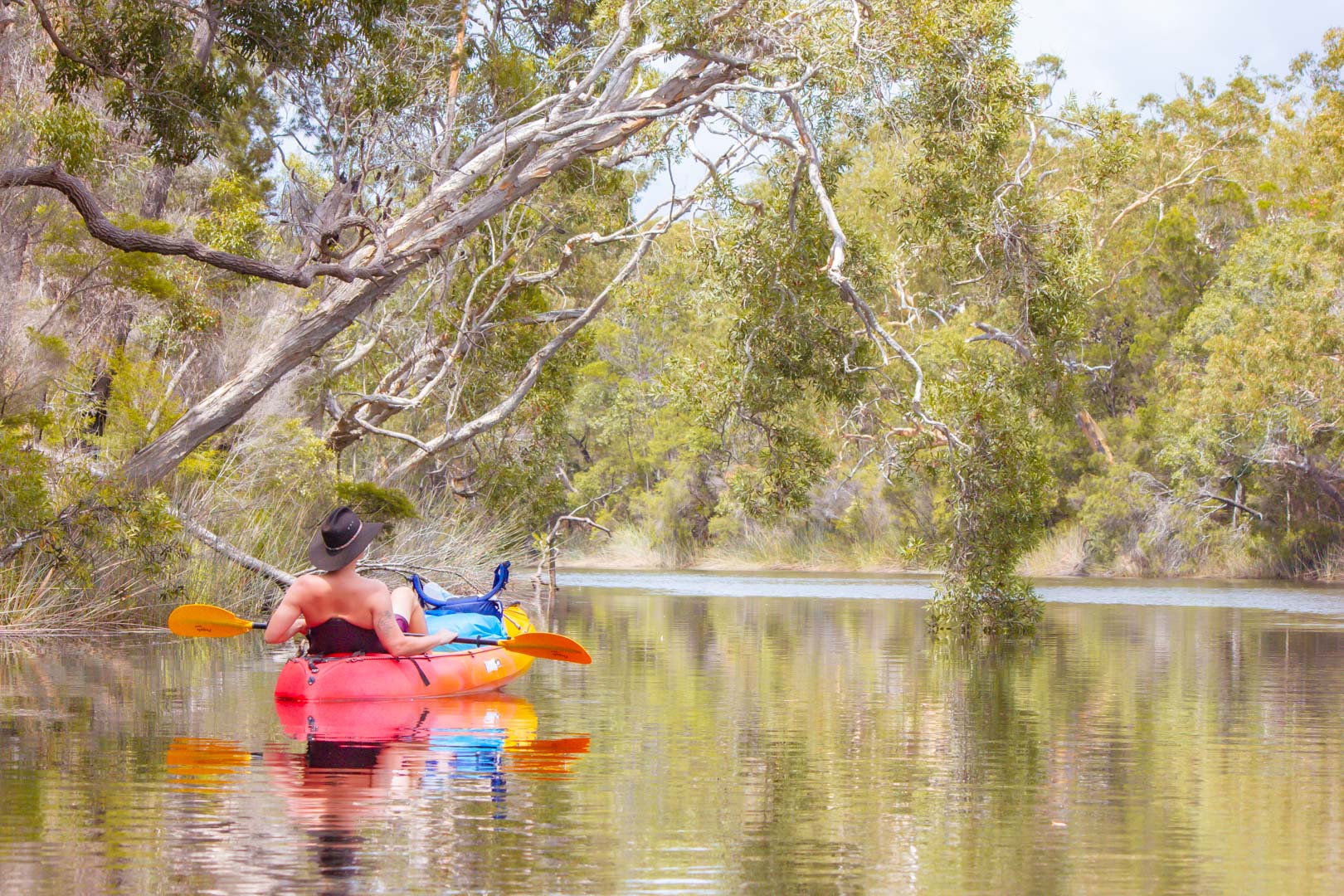
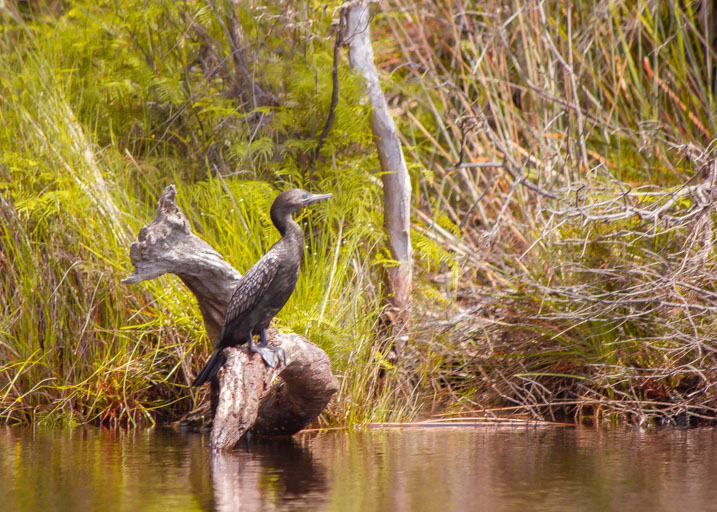
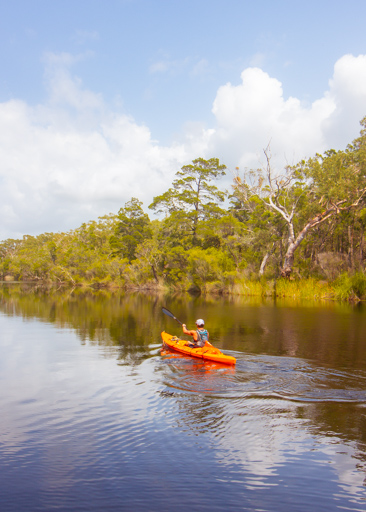

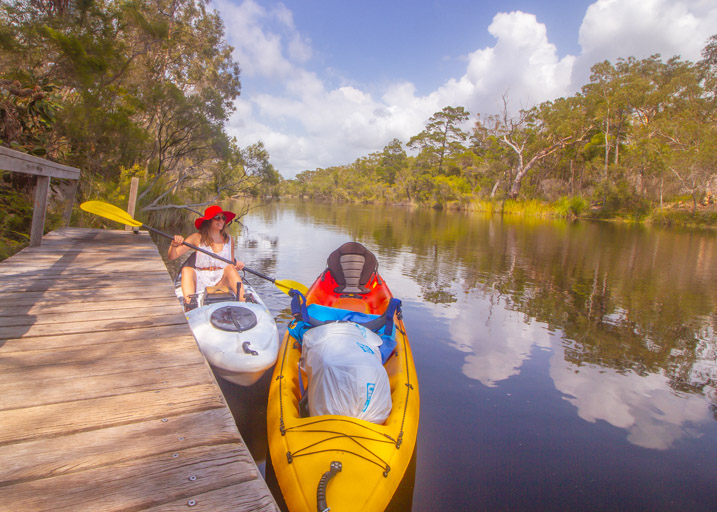
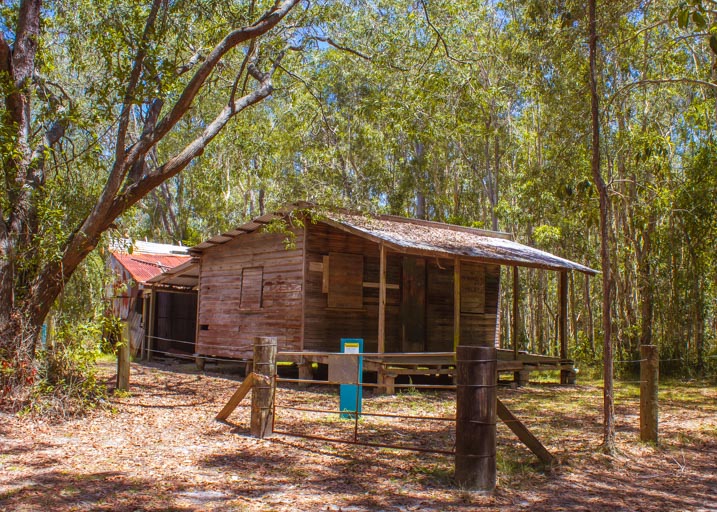
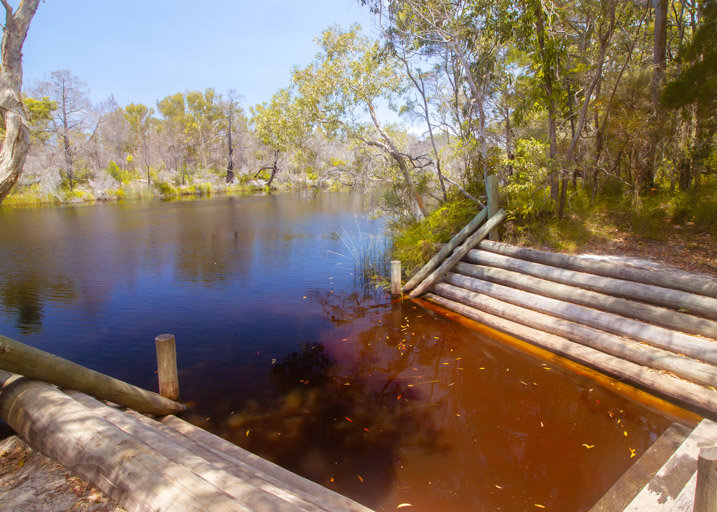

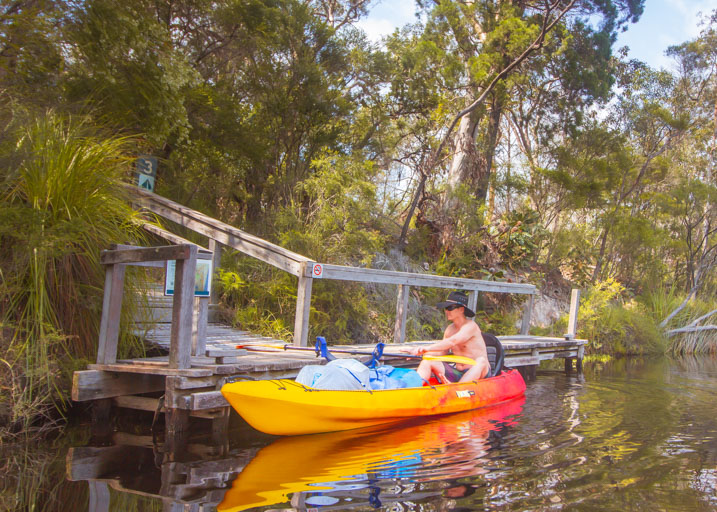

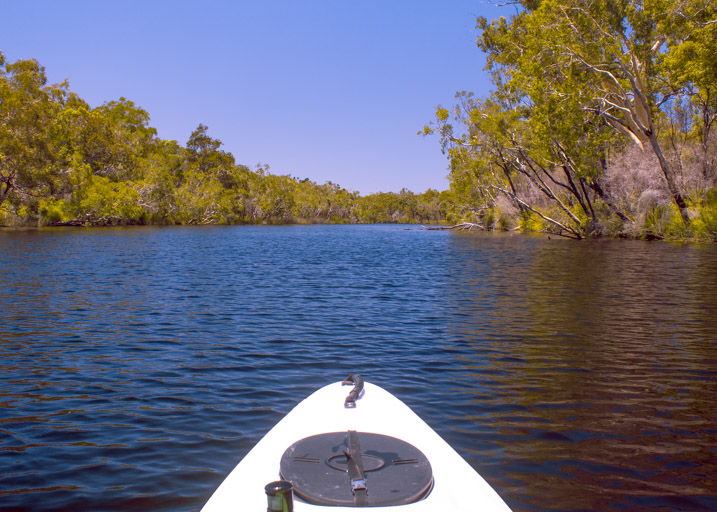
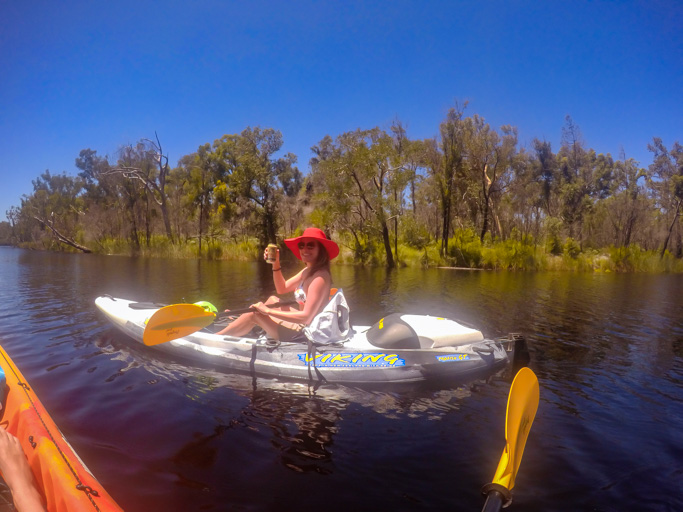
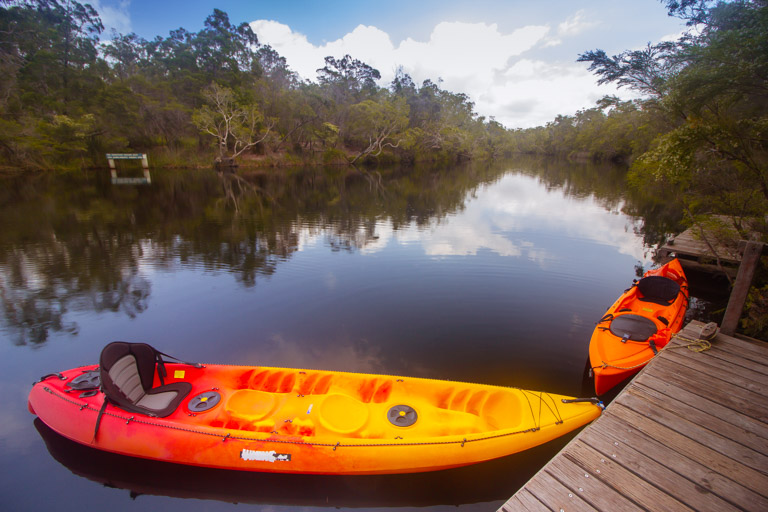
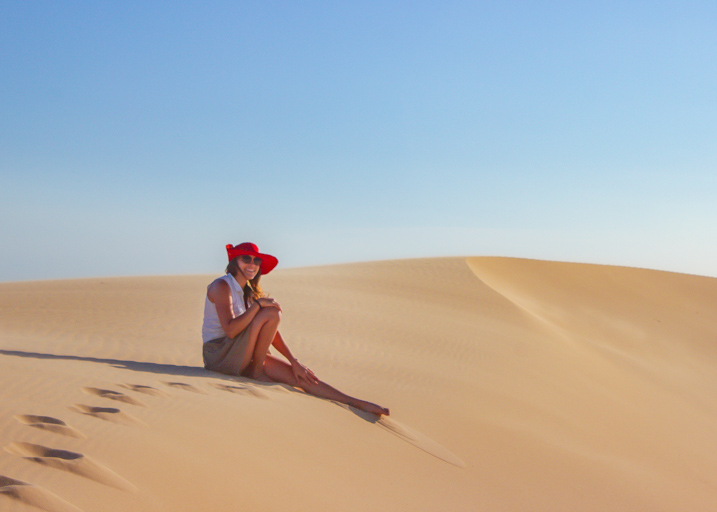


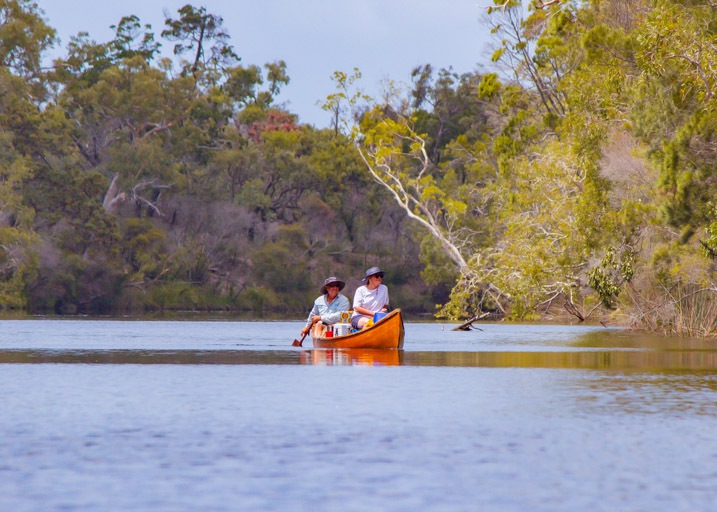
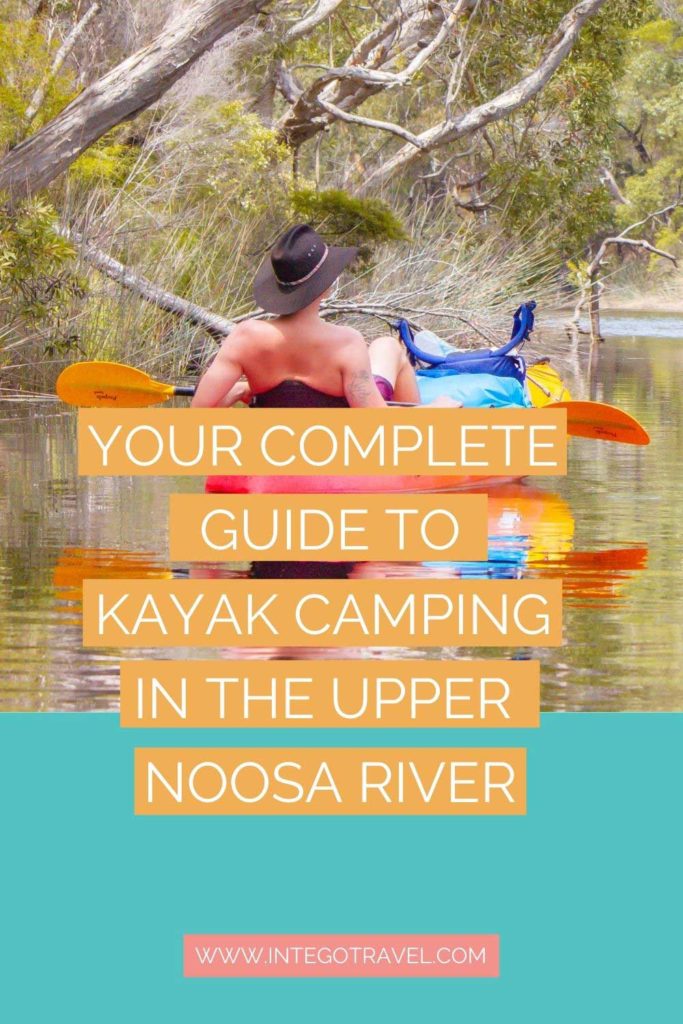
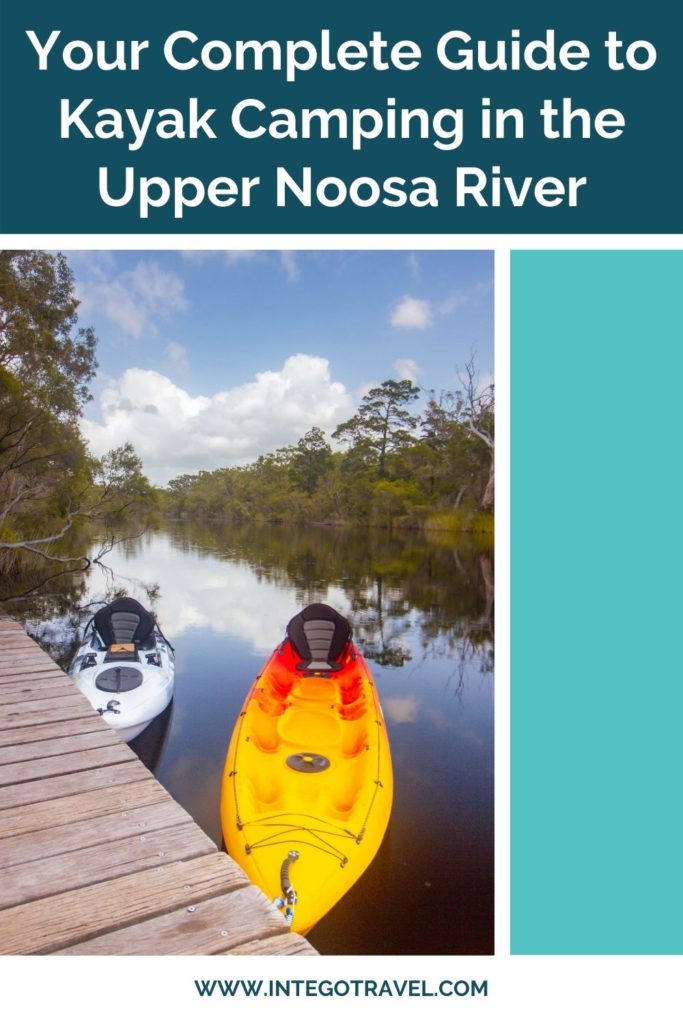
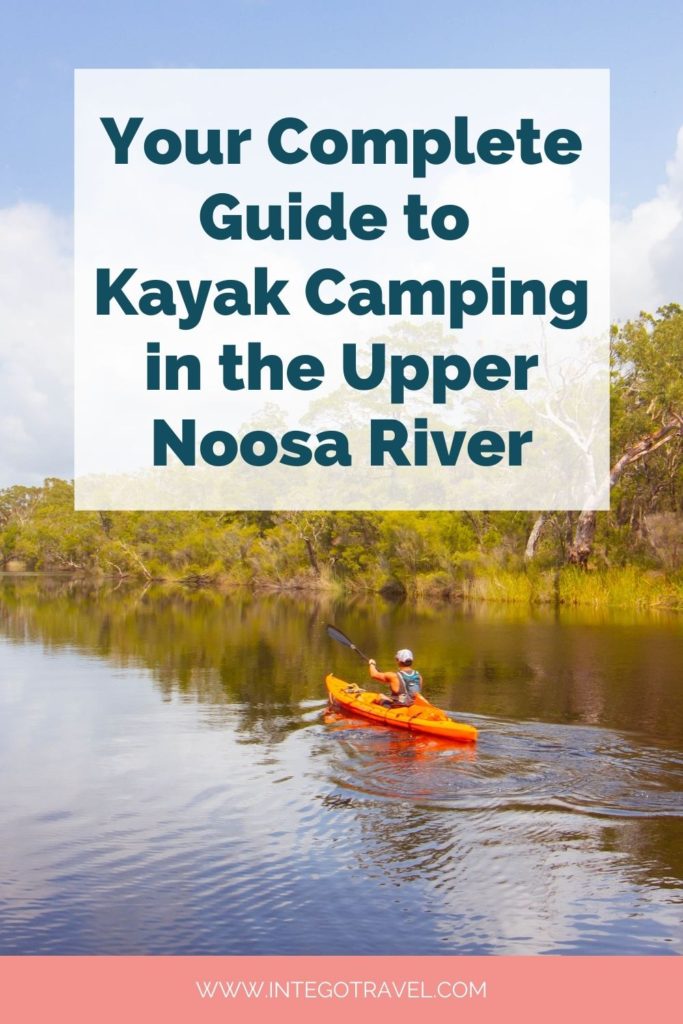
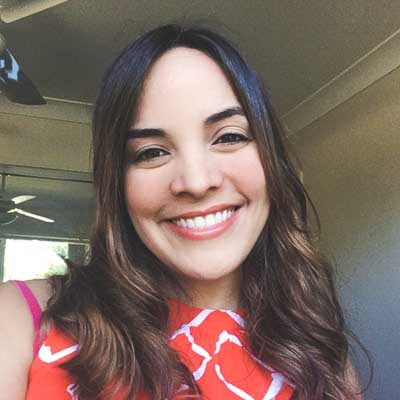




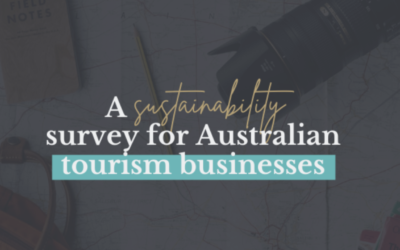
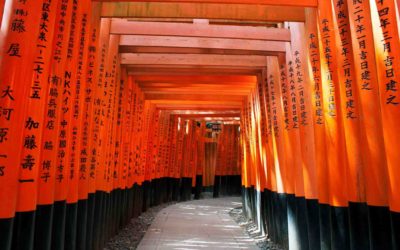
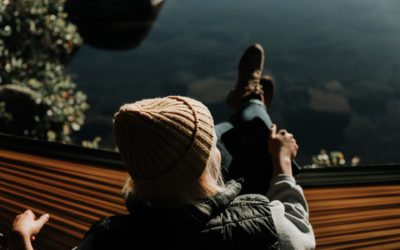
Wow! This is the best read and most comprehensive guide to doing this trip. If it weren’t for this review I would still be wondering if this trip was for me and would miss out! Thanks so much for all the work that went into this guide.
Thanks for the comment, Alonso. I’m so glad you found this useful. 🙂
Where did you park your car while you paddled? Is there a location at Harry’s Hut to park up for a multi day paddle?
Hi Lisa. Thanks for the comment. We left the car parked at Harry’s Hut, yes. There’s a car park there and it gets quite busy with people bringing their canoes and kayaks, so we felt it was safe to leave the car there.